The best cold plunge tubs in 2024, tried and tested
Content is created by CNN Underscored’s team of editors who work independently from the CNN newsroom. When you buy through links on our site, CNN and its syndication partners may earn a commission. Learn more
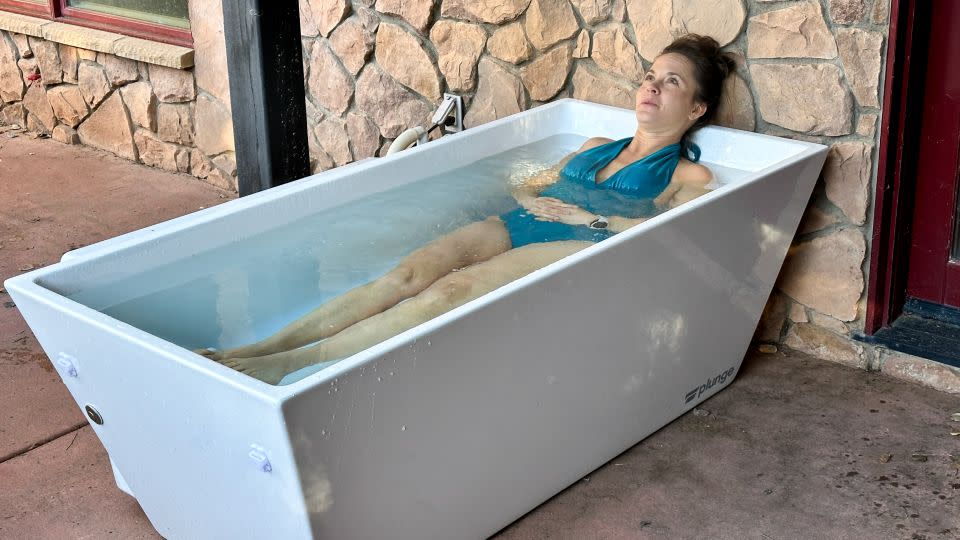
If you’ve ever taken a dip in one of the best cold plunge tubs, you know why soaking in popsicle-temperature water is not just some senseless fad. Still very much a trend in 2024, cold baths have long been appreciated for their numerous potential wellness benefits. And if you’ve recently upped your exercise routine, these chilly submersions might be something your body will appreciate.
While these soaks in frigid temps are the norm in Scandinavian countries, not all of us have arctic fjords running through our neighborhoods. So, many folks are taking to the internet to buy a cold plunge pool for their basement, bathroom or backyard. But with various models available in multiple sizes and configurations, how do you know which is best? I tested five of the most popular cold plunges on the market, pulling options at various price points. Over six weeks, I set ’em all up and enjoyed daily dips to get a pulse on each cold plunge option. In the end, I found two standouts I’d recommend to anyone interested in cold plunging.
The Plunge
Best cold plunge tub
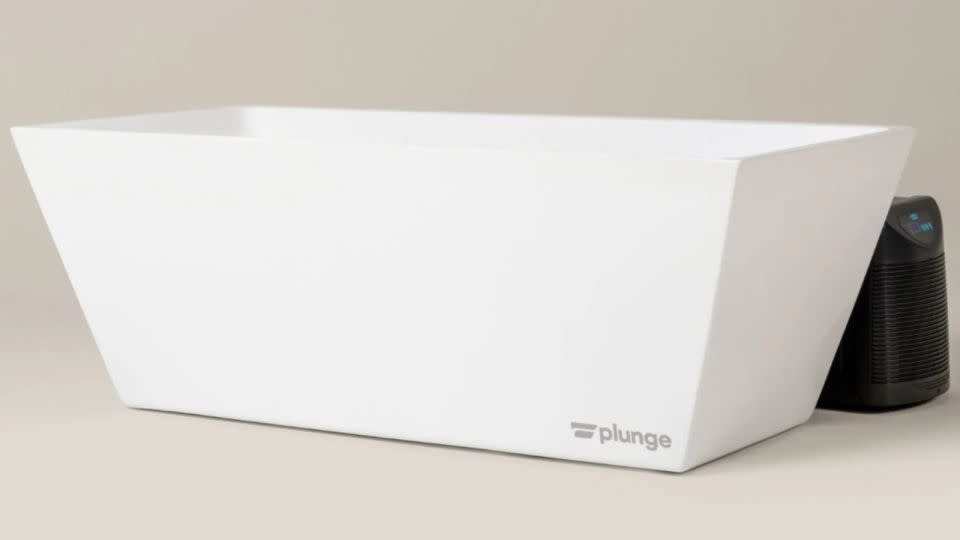
Yes, it’s pricey but this cold plunge pool has everything. Thanks to the chiller and optional heater, you can set the temp however you want and the water filter keeps it clean and sanitized. Plus, the hard-sided tub is the most durable of everything we tested.
Polar Recovery Tub
Best cold plunge tub for beginners
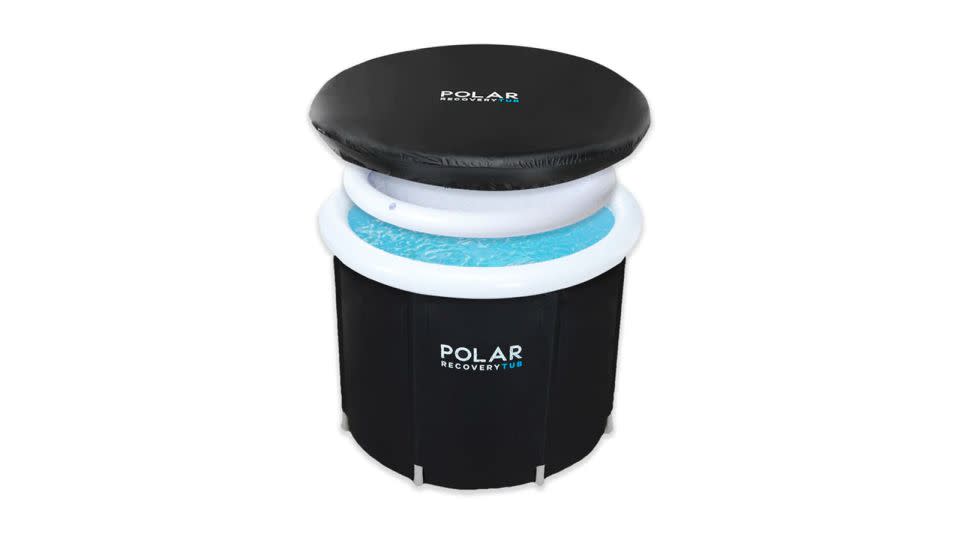
This budget-friendly inflatable tub gets the job done with a protective cover and plastic drainage tap. Setup takes less than 10 minutes and it’s easy to move around, so you can put it wherever you want.
Best cold plunge tub: The Plunge
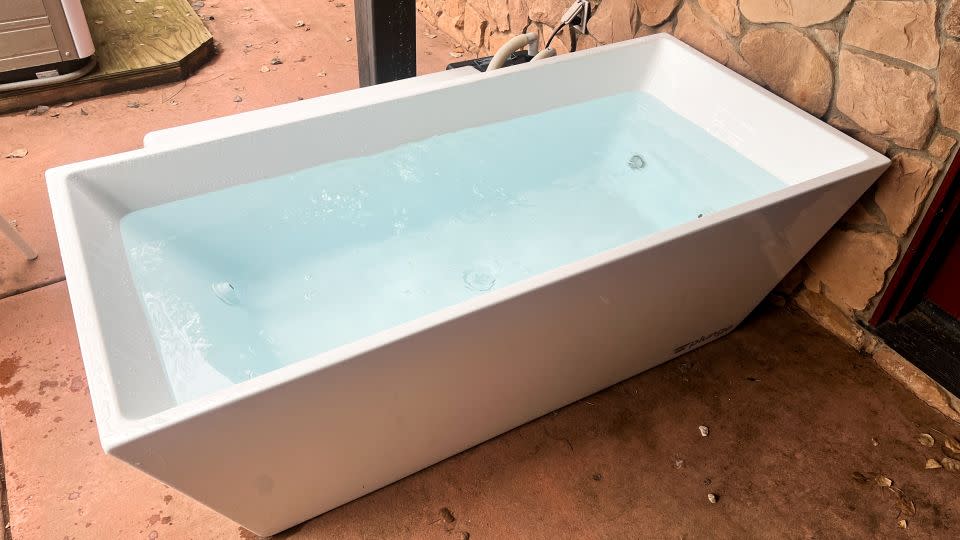
If plunging is a part of your lifestyle, you’ll do no better than the Plunge. And of course, I acknowledge that at nearly $5,000, it’s a splurge, even for those ready to commit. Yet, after more than a month of near-daily use, I fell in love with the Plunge’s beautiful aesthetic, efficient cooler (and heater), generous size and all-around durability and build.
First, the Plunge is the only cold plunge I tested that isn’t inflatable. Instead, it’s crafted from acrylic and fiberglass and has a reinforced metal base, so it’s aesthetically similar to a bathtub found in your house. This makes it beautiful and extremely durable, especially when compared to inflatable plunges like the Polar Recovery or the IcePod Max, both of which are constructed with a thinner PVC. While the Sun Home Cold Plunge is made from burlier military-grade PVC with a drop stitch similar to a paddleboard, it’s still inflatable and more susceptible to destruction than a hard-sided tub. During testing, I moved the Plunge from the garage, down a flight of stairs and into our backyard, where it has lived on an exposed concrete slab with zero scratches, breaks or leaks.
Additionally, the acrylic-and-fiberglass tub holds its shape, regardless of the weather and temperature. With some inflatable options, such as the Redwood Outdoors Yukon tub, it’s recommended you empty the water every 48 hours to prevent sagging and disfiguration. That’s not a problem with the Plunge; you can go several weeks before changing the water.
At its base price, the Plunge comes with a chiller, a device that hooks up to the filtration system and cools the water to temperatures as low as 39 degrees Fahrenheit. There’s a small thermostat on the side of the tub called the Inkbird where you select the temperature. For someone like me, not yet ready to hop into near-freezing water, I could set the initial temperature to 59 degrees Fahrenheit and gradually lower it over a few weeks. This made it easier to get into the habit of cold plunging without shocking my system.
Because I live in a Colorado ski town where winter snow and cold are the norm, I also received the heater with the cold plunge. This does tack on an additional $600 to the base price, but it means you can leave your Plunge outside without fear of freezing. It works alongside the chiller, constantly adjusting based on your desired water temp and the outdoor temperatures. There was a wicked cold snap near the end of December where overnight lows hovered in the negative temps and daytime highs never shot above 20 degrees Fahrenheit for over two weeks. Still, the Plunge kept operating like usual and nothing froze or cracked.
This was in stark contrast to the Redwood Outdoors Yukon, IcePod Max and Polar Recovery tubs, which are all designated as indoor/outdoor plunges. While I was able to clear some of the water out of those, the rest froze in the drainage ports and jammed them all for nearly three weeks. This is avoidable with the Redwood Outdoors Yukon (if you purchase the additional cold plunge chiller), but there is not much you can do for the two affordable tubs other than empty the water ahead of cold snaps. (Bonus: With the heater, you can warm the Plunge water as high as 104 degrees Fahrenheit, turning it into a solo hot tub.)
The setup is certainly more complicated than the affordable cold plunges, but it wasn’t unbearable. The trickiest part was delivery, as the Plunge arrived on a large wooden pallet via freight. I thought I’d communicated about an in-home delivery but our FedEx deliverer had other ideas and left it in the middle of our garage. (To be clear, this might have been a FedEx error — or my own.) An empty Plunge weighs roughly 150 pounds, plus another 50 pounds for the chiller, so it was too cumbersome to move as one person. Eventually, I enlisted the help of a few CrossFit friends to carry the beast into the basement, but it did take some effort.
Once there, setup took roughly 30 minutes, most of which was spent filling up the tub (it holds 75 gallons). The Plunge and the Sun Home Cold Plunge are the only two I tested with chillers, and I liked the step-by-step video instructions on the Plunge app. Written, oral and visual instructions were all available, and they were much easier to follow than those that came with the Sun Home. The brand’s customer support team responded quickly by email, often within an hour.
Finally, the Plunge comes with some nice accessories, my favorite being the high-end insulating spa cover. It’s the only cover that isn’t inflatable and does a great job of keeping debris out and cold or warm temperatures in, making the Plunge more efficient. You also get a skimmer net, a phone/tablet mount and even a rubber ducky with purchase.
Best cold plunge tub for beginners: Polar Recovery Tub
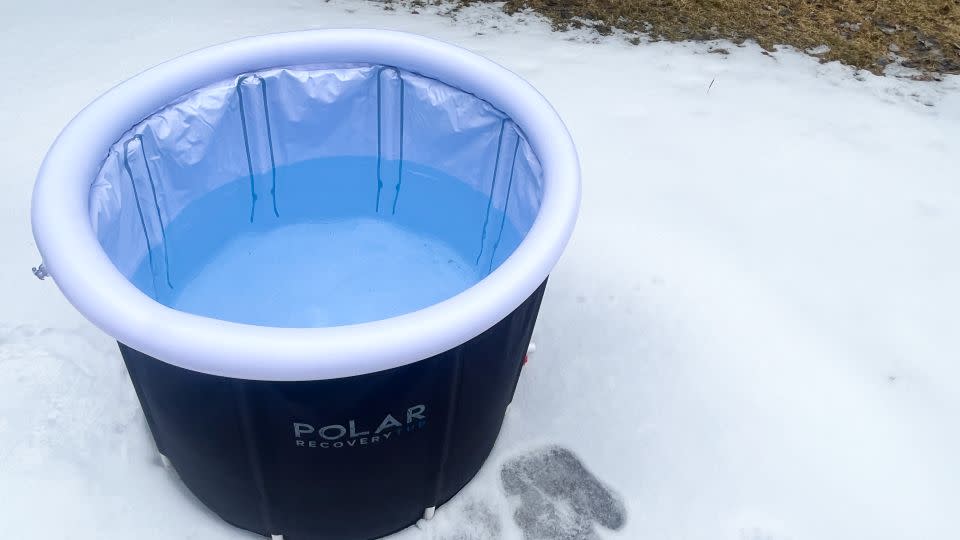
For those curious, the idea of willingly plopping into polar water may be appealing but not convincing. If that’s you and you’re ready to dip your toe into the chilly world of cold plunging without a huge commitment, the Polar Recovery Tub is your best bet. It’s efficient, practical, lightweight and affordable.
Unlike the Plunge or the Sun Home Cold Plunge, there aren’t a lot of bells and whistles with the Polar Recovery Tub. This was immediately obvious when Amazon plunked a small cardboard box on top of my mail — a far cry from the FedEx freight situation. But that’s also the beauty of the Polar Recovery tub: no muss, no fuss. To set up, you assemble the PVC structure and inflate the rim. A handful of PVC poles slide into sleeves circling the tub’s perimeter, providing it with the necessary upright structure. Then, you use a small included hand pump to inflate the rim around the top. When that’s done, you have a flimsy yet functional tub ready to be filled with water — and the whole thing took less than 10 minutes, per our stopwatch.
The Polar Recovery Tub claims to hold 80 gallons of water, and that weight is the backbone of the design, as it pushes against the walls and keeps the whole tub taut. Unlike the Plunge, the Polar Recovery is an upright tub, so you cannot extend your legs. At 5 feet, 5 inches tall, I can sit cross-legged on the floor and the water easily reaches my chest. But, thanks to a recent knee surgery, my left leg doesn’t bend very easily and I did have a tricky time folding it inside. A minor issue but worth noting.
There is no chiller or heater with the Polar Recovery Tub. Instead, you fill it with water and add ice, depending on your preferences. This means temperatures will vary day-to-day and hour-to-hour (one morning it was 42 degrees Fahrenheit and the next 50). If you’re a stickler for structure and programming, you may not like this but I think it’s a small price to pay for the minimal cost.
The downside of no chiller or heater is that it can freeze if you use it outside. During the December cold snap, I couldn’t drain the water fast enough, so some froze inside the tap and bottom drainage valve. In short, I was stuck with a frozen hunk of ice for three weeks until I could manually thaw it with boiling water from our kitchen. I learned my lesson but it was annoying to have to scan the weather looking for the next freeze. But again, that’s the trade-off for affordability.
Unlike the Plunge and Sun Home options, the Polar Recovery Tub is light as a feather and very portable. I have no need to take it to things like soccer practices but you could easily deflate the rim and throw it in the back of your car if you need a cold plunge on the go. Trade-off: It’s so light that an errant wind may carry it over the fence when it’s not filled with water (don’t ask us how we know).
It’s nowhere near as durable as the Sun Home Cold Plunge or the Redwood Outdoors Yukon, but it has a slightly nicer feel than the IcePod, which is similarly priced. The Polar Recovery also comes with an insulating inflatable lid and a stretch cover.
How we tested
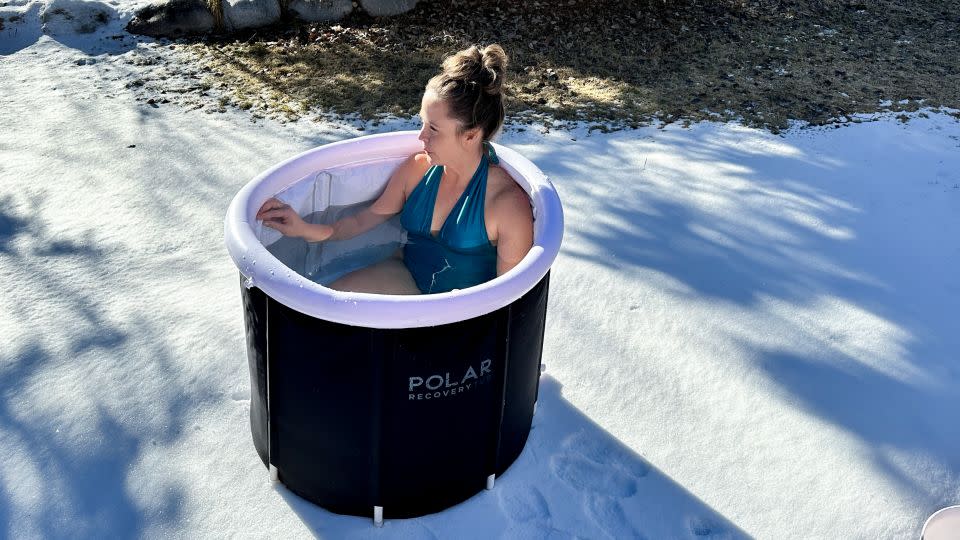
To determine the best cold plunges, I evaluated everything from size and materials to temperature regulation and insulation. I also factored in price because what you get dramatically varies at different price points. Then, I divided the testing into five categories: setup, temperature regulation, materials, aesthetics and features. From there, I directly compared the features of each cold plunge through field testing and standardized tests. Here’s the full breakdown:
Setup
Location: Can the cold plunge be set up inside and outside, or will it only work indoors with a regulated temperature?
Instructions: Were instructions clear to follow? Did they provide any customer support options?
Temperature regulation
Regulation: Does the cold plunge come with a chiller or other means of controlling the temperature?
Time: If so, how long does it take to chill or warm the water? Does it stay insulated against cold?
Controls: Does it come with an app to control the temperature? Is it easy to manage?
Materials
Design: What type of materials are used in construction? Did they hold up to testing?
Durability: Are there any issues from the testing process? Did the cold plunge withstand delivery, locations, etc.?
Aesthetics
Overall look: Does the design look good in your home, or do you want to hide it whenever possible?
Features
Bonuses: Are there any additional features that add value?
Value: Do those additional features justify the cost?
How to choose a cold plunge
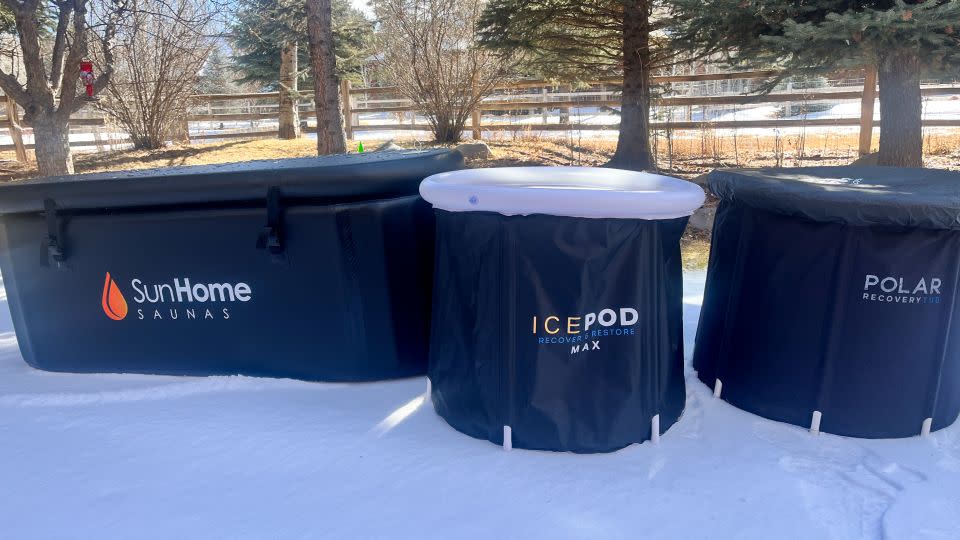
Before you dive into online shopping, it’s a good idea to evaluate what you know about cold plunging. After all, the concept of soaking in icy water has only recently exploded in North America, and there’s a lot of misinformation out there.
“People tend to oversimplify this stuff,” says Dr. François Haman, a professor at the University of Ottawa who has spent the past 24 years studying cold exposure and working with various global military services. He notes that many commonly touted benefits, such as a bolstered immune system and reduced inflammation, simply do not have enough research behind them. It’s not that the data goes against those benefits; there is just relatively little research out there. What does exist is specific, so Haman notes that it is difficult to make the dramatic claims often found online. “We know that if you hurt your hand and put snow on it, it will be an anti-inflammatory,” he says. “We know that and it does work. But we don’t know how it works yet at the whole body level.”
As of now, Haman says the main data-supported benefit of cold plunging is that it feels good due to the body releasing dopamine and stress hormones. “I’m stimulated the whole day,” he says.
But the problems arise when folks stay in the water too long. “People think they can beat Mother Nature and stand that ice water in excess,” Haman says. He explains that anything more than two minutes is unnecessary and risky, and it doesn’t come with added benefits. He also notes that too cold of water or too long of time periods can lead to cardiac arrest via vasovagal shock or an abrupt increase in blood pressure. Finally, Haman recommends covering your hands and feet to prevent long-term neurological damage.
Ultimately, Haman suggests starting small and remembering that everybody is different. If you weigh 140 pounds, you’re more at risk of hypothermic reactions than someone who weighs 200 pounds, so keep that variability in mind. And above all else, don’t be a hero. Haman compares it to exercise. If you’re just coming off the couch, you wouldn’t run a marathon, so use that same slow-and-steady approach to cold plunging.
“When you go into the ice water, you learn about yourself,” Haman says. “Phase these conditions. Maybe you gotta slow down and maybe you just need to know yourself, and that’s way more powerful than pushing through and getting hurt.”
Once you’re ready to take the plunge (pun intended), the sheer volume and variety of available cold plunges is staggering. That’s why it’s a good idea to know which features and factors are a priority for your needs.
First, consider the location. While all those aesthetic Instagram videos often show people cold plunging outside, many folks who don’t have backyards or outdoor balconies will need to keep their plunge inside. If this is you, you’re in luck, since you won’t have to worry about the outdoor temperature affecting your water. (Haman often takes a hot bath at night, leaves the water in the tub and uses it again for his coldish plunge the following morning.) If you know your cold plunge will be stored outside year-round, you’ll have to consider factors like winter freezing (more on that below).
Once you know where your cold plunge is going, consider the size. Cold plunges are typically available in two designs: an upright, barrel-type model like the Polar Recovery Tub or a bathtub-esque profile like the Plunge or Sun Home offerings. The barrel style of cold plunge means you won’t be able to extend your legs and will likely have to sit or kneel in a bit of a crouch. However, it takes up less floor space if you don’t have much extra room. Bathtub plunges are often more comfortable since you can fully recline and easily submerge up to your chin, but they often require more water. If you choose a model that requires constant attention and water changing, this could be a hassle.
If you’re ready to invest in a high-quality tub like the Plunge or the Sun Home Cold Plunge, you’ll also be receiving a water chiller with filtration. The water chillers often cost more than the plunge tubs themselves — that’s why these options are pricier. These water chillers allow you to set a specific temperature that goes as low as 37.5 degrees Fahrenheit, and they’re often compatible with apps on your phone so you can change the temperature while you’re away. Additionally, these water chillers often act as heaters for cold winter environments. In this way, you won’t have to worry about freezing pipes or frozen water like you would with the Polar Recovery or IcePod. In fact, most high-end cold plunges are also miniature hot tubs that can be heated up to 104 degrees Fahrenheit.
Plus, the built-in filtration keeps your water clean so you don’t have to empty it and refresh it as often. Many of the cheaper versions will require you to empty your water routinely so that you aren’t soaking in filth.
The material of the cold plunge is another factor. Of the five plunges we tested, four of them were inflatable, which is great for portability but less so for durability. Cold plunges like The Polar Recovery and IcePod are made from thinner materials, so they’re more likely to tear or rip, whereas the Sun Home Cold Plunge uses military-grade PVC with a drop stitch, similar to an inflatable paddleboard. However, the Plunge ditched the inflatable model in favor of an acrylic and fiberglass tub with a steel floor. Hard-sided tubs like the Plunge are heavier and much tougher to move around, but they may be more durable in the long run.
Finally, consider setup and installation. Some of the smaller, more affordable options set up in approximately 10 minutes and come in packaging left on top of your mailbox. However, any type of plunge that comes with a chiller will often be shipped via freight and attached to a wooden pallet. In those instances, the delivery team will often leave the pallet in your garage or driveway for you to handle, so make sure you’re prepared. (Yes, this heads-up comes from personal experience!)
Cold plunge FAQs
Other cold plunges we tested
Sun Home Saunas Cold Plunge
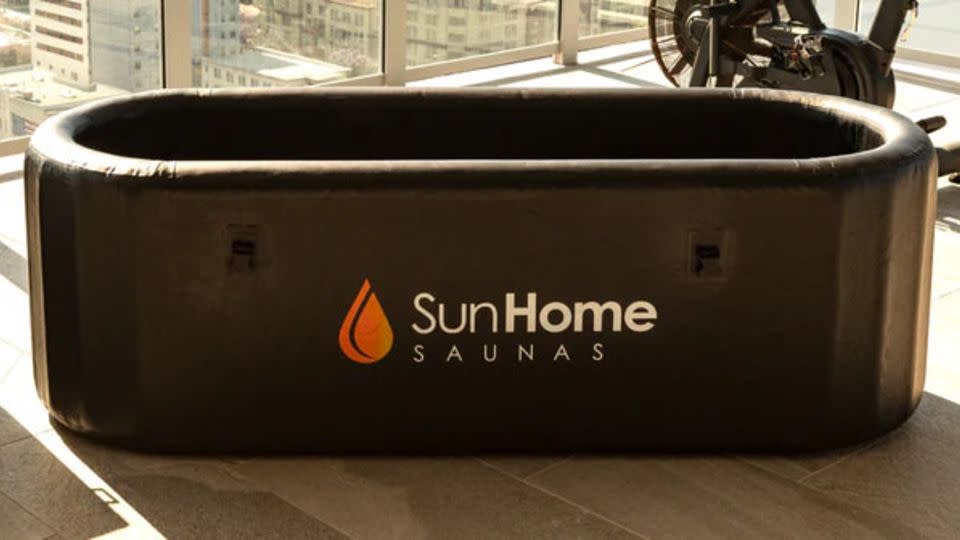
There’s plenty to like about the Sun Home Cold Plunge, and I really enjoyed using it. It’s similar to the Plunge in that you can extend your legs and it comes with a chiller/heater to regulate your water temperature. Plus, the chiller is on wheels, which makes it much easier to move than the one that comes with the Plunge. However, the Sun Home Cold Plunge is inflatable rather than hard-sided, making us wonder if it could handle the long haul since I’ve had a few squirrels nibble on our backyard paddleboards and it’s a similar material. However, if you want a lighter option that’s easier to move around but still comes with the bells and whistles, this is a great choice.
Redwood Outdoors Yukon Cold Plunge Tub
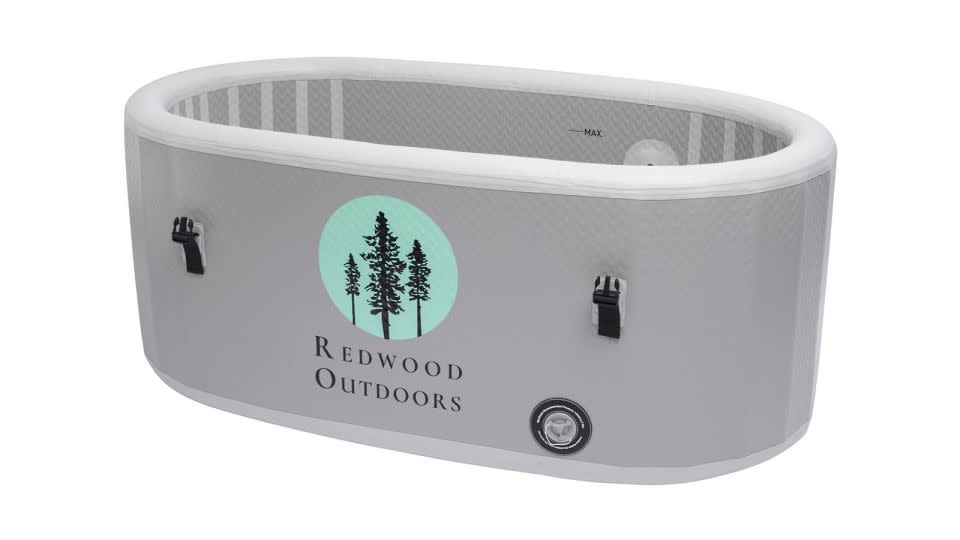
The Yukon was a mixed bag for me. Like the Sun Home, it’s a highly durable inflatable design that is quite burly when compared to more affordable options. It’s very roomy, with plenty of space to stretch your legs. However, it doesn’t come with a chiller at this price point, so it felt expensive for something with no temperature regulation (it froze just as quickly as the Polar Recovery Tub). Redwood Outdoors does sell this tub with a chiller/heater combination, so if you’re looking to spread out the investment, it may be the way to go.
Gym Supply Co. IcePod Max
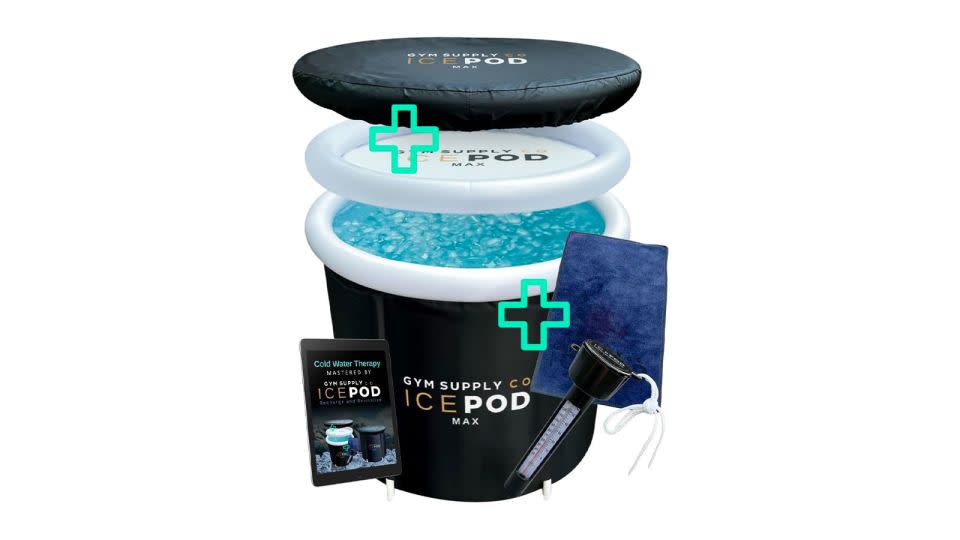
The IcePod Max is almost identical in design to the Polar Recovery Tub, and the setup time was virtually the same (approximately 10 minutes and very easy to cobble together). However, I felt the Polar Recovery Tub had slightly better materials and its top tube seemed to deflate less than the IcePod. Since they are almost the same price, I opted for the one that felt a little tougher.
Note: The prices above reflect the retailers' listed price at the time of publication.
For more CNN news and newsletters create an account at CNN.com

